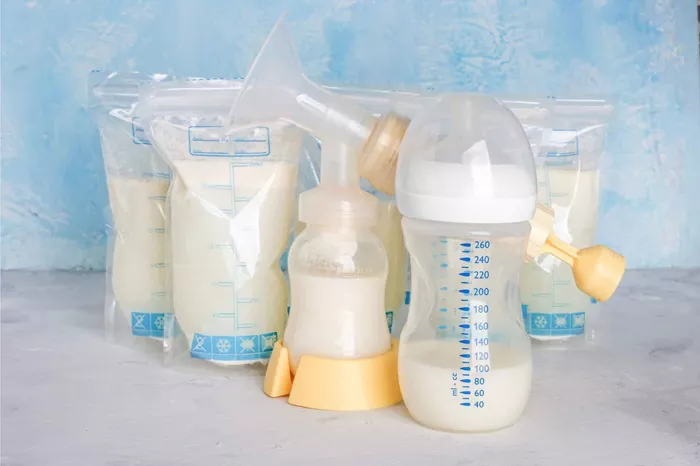Breast milk and formula are both viable options for feeding infants. Each has unique benefits that support a baby’s growth and development. This article outlines the advantages of both breast milk and formula to help parents make informed decisions.
18 Benefits of Breast Milk and Formula
1. Nutritional Composition
Breast milk provides the perfect balance of nutrients. It contains proteins, fats, carbohydrates, vitamins, and minerals in optimal proportions.
2. Immune System Support
Breast milk contains antibodies and white blood cells. These help protect infants from infections and diseases.
3. Digestive Health
Breast milk is easily digestible. It reduces the likelihood of constipation, diarrhea, and other digestive issues.
4. Cognitive Development
Breast milk contains DHA and ARA. These fatty acids support brain development and cognitive functions.
5. Bonding and Emotional Benefits
Breastfeeding promotes skin-to-skin contact. This enhances bonding between mother and child.
6. Reduced Risk of Sudden Infant Death Syndrome (SIDS)
Breastfeeding lowers the risk of SIDS. This benefit is supported by numerous studies.
7. Protection Against Allergies
Breast milk can reduce the risk of allergies. It helps build a stronger immune system.
8. Lower Risk of Chronic Conditions
Breastfed babies have a lower risk of chronic conditions. These include asthma, diabetes, and obesity.
9. Cost-Effective
Breast milk is free and readily available. It reduces the need for purchasing formula.
10. Tailored Nutrition
Breast milk composition changes. It adapts to meet the infant’s evolving nutritional needs.
11. Reduced Hospital Visits
Breastfed babies have fewer hospital visits. They experience fewer illnesses and infections.
12. Weight Regulation
Breastfeeding helps regulate baby weight. It reduces the risk of both underweight and overweight issues.
13. Environmental Benefits
Breastfeeding produces no waste. It is eco-friendly compared to formula packaging.
14. Hormonal Benefits for Mothers
Breastfeeding releases oxytocin. This hormone helps the uterus return to its pre-pregnancy size.
15. Lower Risk of Certain Cancers
Breastfeeding reduces the mother’s risk of breast and ovarian cancers. It also lowers the risk of osteoporosis.
16. Delayed Menstruation
Breastfeeding can delay the return of menstruation. This can help with family planning.
17. Convenience
Breast milk is always at the right temperature. There is no need for preparation or sterilization.
18. Enhanced Taste Variety
Breast milk flavor varies based on the mother’s diet. This exposure helps babies accept a wider range of solid foods later.
Benefits of Formula
1. Nutritional Completeness
Formula is designed to be nutritionally complete. It provides essential nutrients for growth and development.
2. Flexibility in Feeding
Formula feeding allows for flexible feeding schedules. Other caregivers can feed the baby, providing mothers with more flexibility.
3. No Dietary Restrictions for Mothers
Mothers can eat and drink without worrying about affecting their milk. This can reduce stress and dietary restrictions.
4. Measurement and Monitoring
Formula feeding allows precise measurement. Parents can monitor exactly how much the baby is eating.
5. Convenience for Working Mothers
Formula feeding can be more convenient for working mothers. It eliminates the need to pump and store breast milk.
6. Reduced Feeding Frequency
Formula takes longer to digest than breast milk. This can result in longer intervals between feedings.
7. Consistency
Formula provides consistent nutrition. Breast milk composition varies, but formula remains constant.
8. No Physical Discomfort
Formula feeding does not involve the physical discomforts of breastfeeding. It avoids issues like sore nipples and engorgement.
9. Allergy Management
Hypoallergenic formulas are available. These can be used for babies with milk allergies.
10. Dietary Control
Parents can control the baby’s diet. Formula ensures the baby receives specific nutrients regardless of the mother’s diet.
11. Inclusivity
Formula feeding allows other family members to participate in feeding. This can help with bonding and sharing responsibilities.
12. Public Feeding Comfort
Some mothers feel more comfortable feeding formula in public. This avoids the potential discomfort of breastfeeding in public spaces.
13. Return to Work or Routine
Formula feeding can facilitate a quicker return to work or normal routines. Mothers can balance feeding with other responsibilities.
14. Travel Convenience
Formula feeding can be more convenient during travel. There is no need for refrigeration or special storage.
15. Medical Conditions
Mothers with certain medical conditions may be advised against breastfeeding. Formula provides a safe alternative.
16. Adoption and Surrogacy
Formula is essential for adoptive and surrogate families. It ensures babies receive proper nutrition.
17. Reduced Risk of Transmission
Formula feeding eliminates the risk of transmitting infections through breast milk. This includes HIV and certain medications.
18. Freedom of Clothing Choices
Formula feeding does not require special clothing. Mothers can wear regular bras and outfits without needing access for breastfeeding.
Conclusion
Both breast milk and formula offer significant benefits. The choice between breastfeeding and formula feeding depends on individual circumstances, preferences, and health considerations. Understanding the advantages of each can help parents make the best decision for their baby’s health and well-being.


